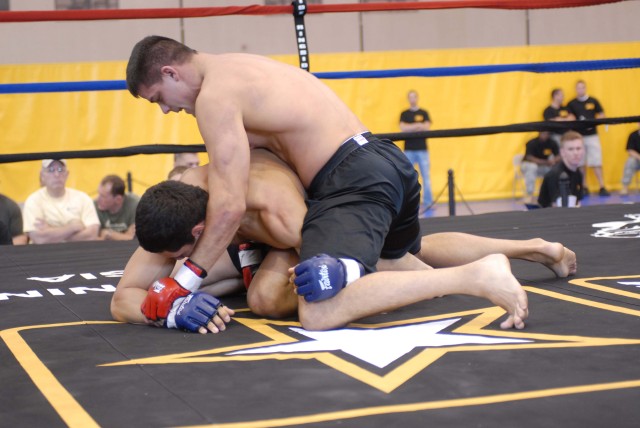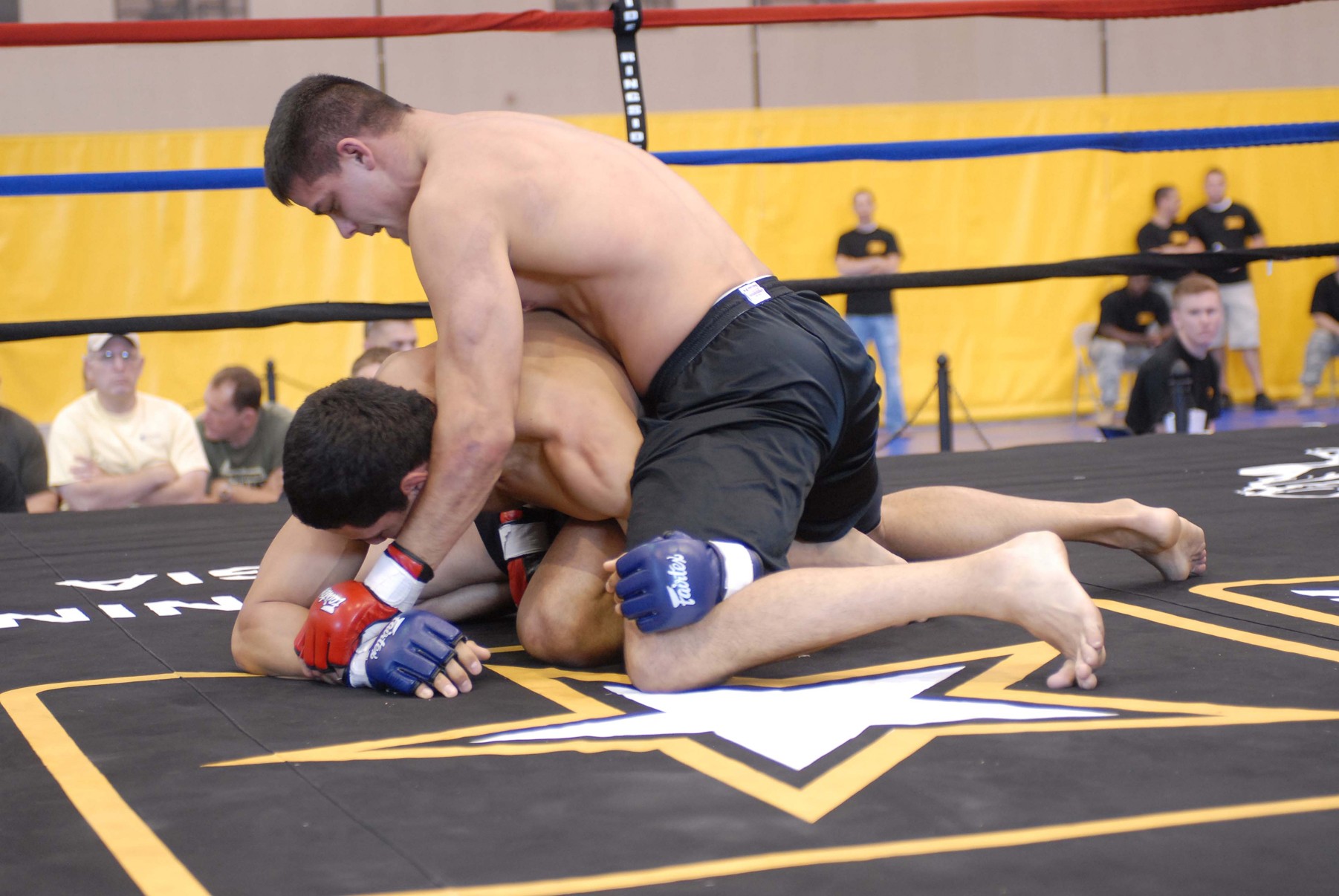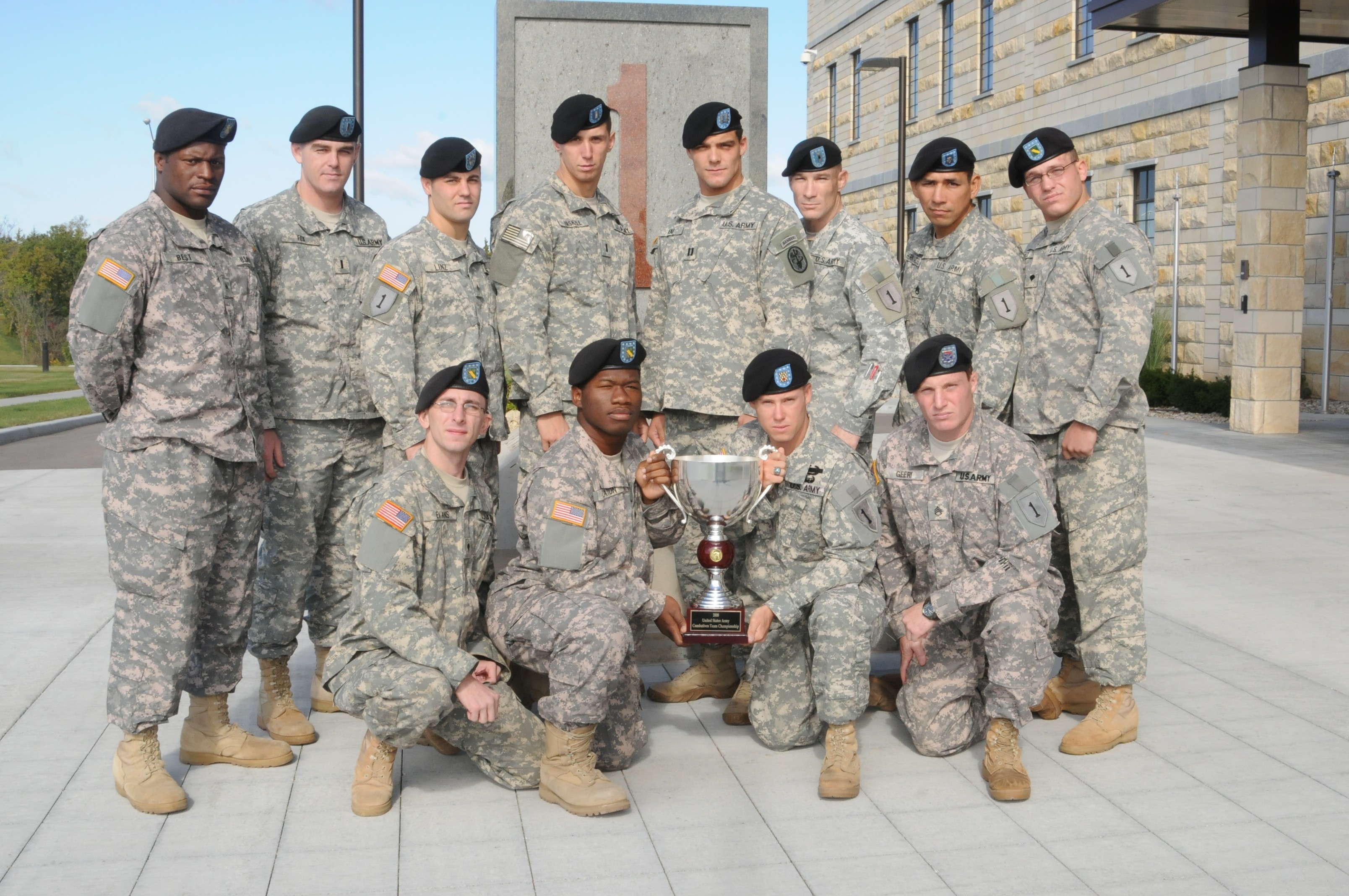The 1st Infantry Division proved it has the baddest of the bad in combat Soldiers when its team captured first place in the 2008 U.S. Army Combatives Tournament Oct. 3-5 at Fort Benning, Ga.
More than 300 Soldiers from posts around the world participated in the tournament at Fort Benning's Smith Physical Fitness Center. Fort Riley's 14-member team faced opponents in seven weight classes.
Tournament points earned by individual fighters were combined for the team totals. Following Oct. 5 final rounds, the Big Red One team had the most points, taking first place and a large, silver cup to bring back to Fort Riley.
Combatives trains Soldiers in closequarter, hand-to-hand combat. It's a mixed martial art combining Brazilian jiu-jitsu, boxing, clinch hitting, takedowns and ground fighting techniques. Fighters also use judo, kick boxing and Greco-Roman wrestling techniques.
Cpl. Joseph Best of 1st Combined Arms Battalion, 63rd Armor Regiment, fought in the heavyweight division.
"We had a combination of the 2006 and 2007 teams for this year's team, so we knew we had a good chance of taking first place this year," Best said.
Capt. Brandon Bear fought 11 matches during the tournament in the 185-pound class. He lost his first match, but pushed himself to his limits to claim third place in a field of 64 competitors at the tournament's end.
"In my first match, I came out and wasn't in the mindset I needed to be in," he said. "I tried some things, made some mistakes and it didn't work out. But after that, I think I did pretty well overall."
Bear, the executive officer for Company C, Warrior Transition Battalion, wrestled in college at the University of California, Davis. He got his first taste of combatives training during his Infantry Officer Basic Course at Fort Benning. He took first place in the 2006 U.S. Army Combatives Tournament, but missed last year's action due to deployment with the 4th Infantry Brigade Combat Team to Iraq.
Staff Sgt. Nathan McClure is the noncommissioned officer in charge of Fort Riley's combatives program. His job involves running the Combatives Training Center on Custer Hill, hiring instructors and setting class schedules.
The center trains Soldiers in Levels I and II combatives skills and will add Level III training in February 2009.
"We've taken second place the last two years in a row," McClure said. "This is our first year to take first place overall. You can only take second so many times before you have to go get first."
To prepare for this tournament, the team trained at Fort Riley from 6:30 to 8 a.m. daily, then headed to Kansas State University from 11:30 a.m. to 2 p.m. to train under the supervision of Dave Durnil and other K-State modern combatives coaches.
"I'm really happy with how the team did," Durnil said. "We coached them five days a week at KSU. Our team membership is based on winners from this summer's Fort Riley Combatives Tournament."
Durnil is a Level IV combatives instructor and holds a brown belt in Brazilian jiu-jitsu. This is the third year he has coached a Fort Riley team for the all-Army competition. His intensive, eightweek training program included nutritional education from a doctoral candidate who also is a professional fighter in mixed martial arts. "
Jen Case really helped the team learn about their body composition and diet analysis," Durnil said. "As a result, we were able to tailor each Soldier's workouts and get them to peak performance levels."
The team's performance also pleased Maj. Ray Fuller of 1st Inf. Div. G3 training. "They trained hard, putting in a lot of late hours and effort, and they won on their own merits," Fuller said. "Working with KState over the past three years has really paid big dividends for the team when they moved from winning the Fort Riley Combatives Tournament into training for the all-Army tournament."
Nine of this year's team members will soon deploy to Iraq with the 2nd Heavy Brigade Combat Team for a 12-month combat tour. Even with the talent drain, Murphy isn't worried about next year's tournament. He said the 2006 team was comprised mostly of 4th IBCT Soldiers, who promptly deployed to Iraq after competing in the tournament. The next year, a 2007 team of mostly new fighters captured second place.




Social Sharing